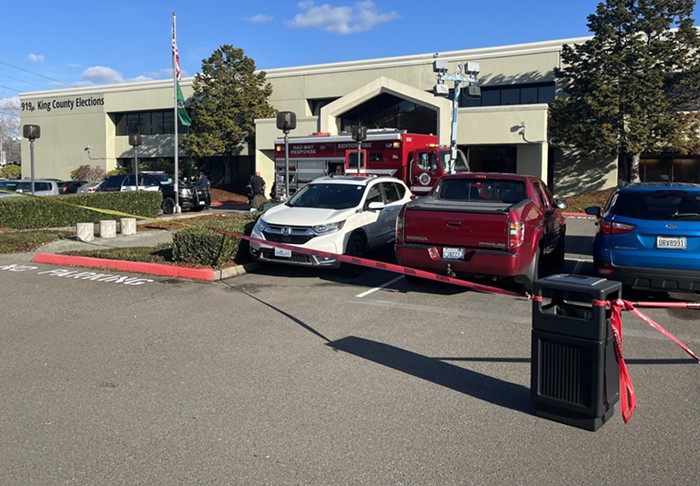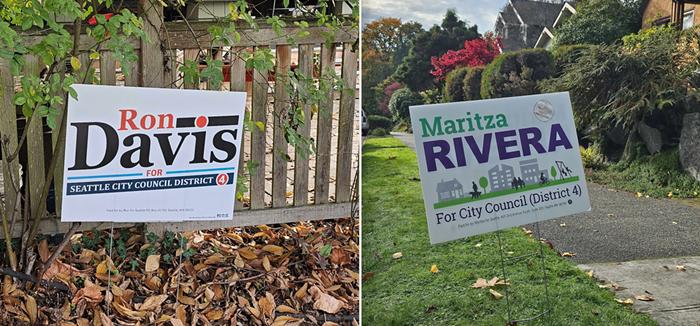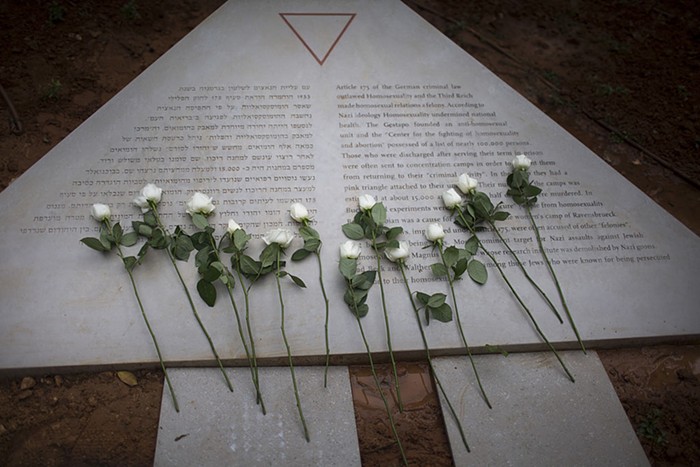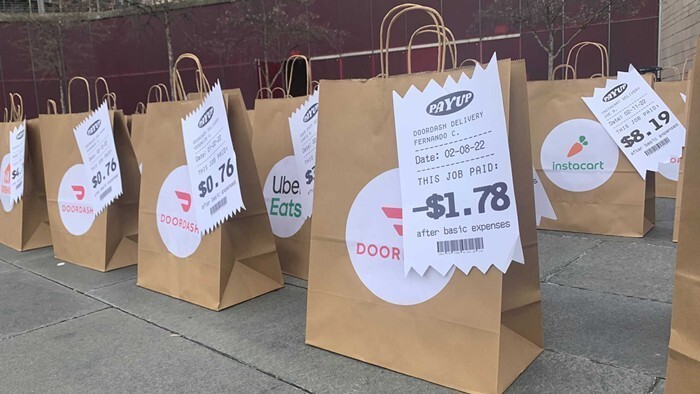By the time you're reading this, an eight-member jury has probably reached several conclusions about the death of Native American woodcarver John T. Williams, who was shot on August 30 by Seattle Police Department (SPD) officer Ian Birk. The jury's yes or no answers to a checklist of 15 questions—for example, "Did Officer Birk believe that John T. Williams posed an imminent threat of serious physical harm to himself or others at the times he fired his weapon?"—could be used sometime in the coming weeks or months by the King County Prosecuting Attorney's Office if they decide to file criminal charges against Birk.
As The Stranger went to press, the final day of testimony was just finishing. What I can report, after sitting through nearly 40 hours of witness and officer testimony, is that Birk insists he was in danger. Other officers insist that Birk followed protocol. However, witnesses offered conflicting accounts of what happened.
Birk's account of what happened: "I clearly saw a knife in the open position when [Williams] passed in front of my patrol car," Birk testified. A video from inside the police cruiser played for the jury shows that the shooting occurred 10 seconds after Birk threw on his patrol lights and exited his vehicle. He chased Williams westbound down Howell Street with his gun drawn, calling out "Hey!" to Williams three times. Outside the video frame, Birk is heard saying, "Put down the knife" and then firing his gun several times. Birk testified that circumstances required him to fire when Williams turned on him "aggressively" with a so-called pre-attack stance. "His brow was furrowed; his eyes were fixed in a thousand-yard stare. His jaw was set. He had the knife raised up," Birk said when asked by his attorney, Ted Buck.
Witness accounts of what happened: Over a dozen witnesses to the shooting testified, but none reported seeing Williams act aggressively toward Birk or anyone else. "He was just walking downtown," said Thomas Sirgedas, who saw the shooting while walking to catch his bus home. "His pace never changed." Witnesses also testified (and as audio from the incident corroborates) that Birk never identified himself as a cop. "I didn't know it was a police officer and I didn't want to turn around and become the target of a random shooting," said Nancy Pushman, who was walking ahead of Williams on the block where he was shot. No witnesses reported seeing a knife in Williams's hand. Furthermore, no open knives were found near Williams's body—just two closed folding knives, both considered legal to carry according to city law.
Birk may have failed to follow police training. The Williams's family attorney, Tim Ford, shared this exchange with Birk:
Ford: Seattle police are trained to give a warning before they fire, correct?
Birk: That is part of our training, correct.
Did you ever say [to Mr. Williams], "Put the knife down or I'll shoot"?
There was a lot going on. I did the best I could under the circumstances.
You could've said, "Or I'll shoot."
I said everything I could've said under the circumstances.
You could say ["Put the knife down"] three times but you couldn't add "Or I'll shoot"?
The concern was basically immediate, and I needed to respond as fast as possible.
Birk testified that he fired on Williams because he was 9.5 feet away. Police officers are trained to keep 21 feet between themselves and suspects armed with knives (or other sharp-edged objects), according to national police standards adopted by the SPD. However, by running up to Williams, Birk was the one who closed the distance to less than 21 feet.
Williams wasn't facing Birk when shot. Another exchange:
Ford: You testified that Mr. Williams was staring right at you [when you fired]?
Birk: That's what I recollect, yes, sir.
Do you know why, then, the bullet passed through the right cheek and out his left cheek?
Simply holding a closed knife was reason to shoot. Ford questions Officer William Collins, a 21-year SPD veteran:
Ford: Is a closed knife a similar threat to an open knife?
Collins: Absolutely. It's a major threat. To me, it's just as big [a threat] as an open knife.
A closed knife is grounds for using a firearm?
I believe so... it can be opened in an instant. You can get your ears cut off and be stabbed. We don't get paid enough to be hurt.
It's unclear whether Officer Birk failed to follow SPD protocol that says he should call for backup, maintain a 21-foot bubble, identify himself as an officer, and adequately warn Williams that he would shoot—all actions that may have prevented the shooting. But in the end, Birk testified it was a choice between shooting and getting stabbed, because "whoever's taking action will always have [an] advantage on whoever's reacting. Sometimes it's just not possible to react."
For his part, it's unclear if Williams had time to react. Williams couldn't get more than 21 feet away from the officer who ran up to him, and he was considered a threat simply for having a closed legal knife.
Williams, it seems to me, had no way out. ![]()


















